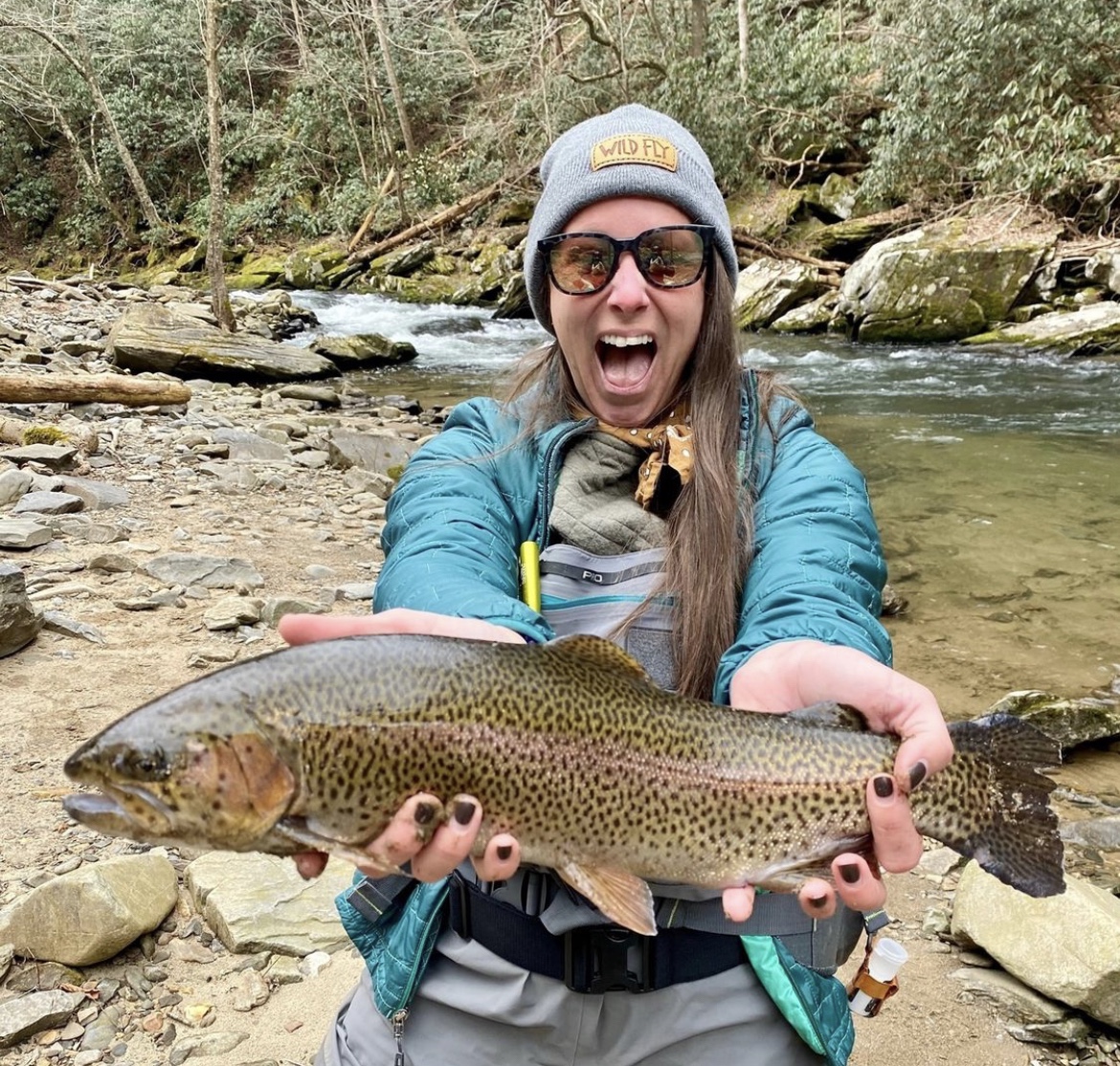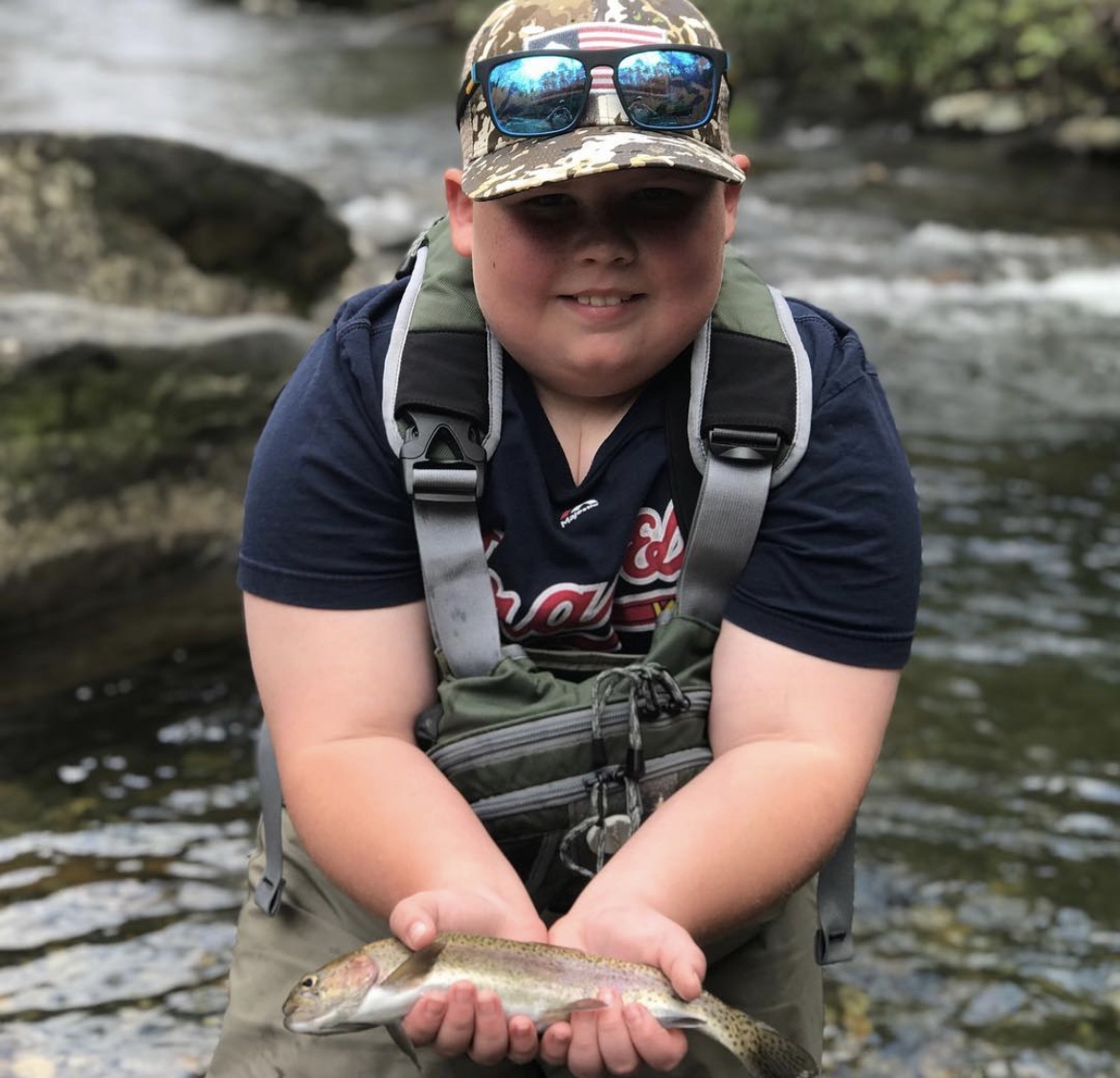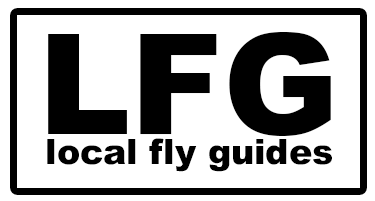
North Carolina is one of the best places in the southeast to fish for a variety of trout species. Some of the most popular trout species in North Carolina are Rainbow Trout, Brown Trout and Brook Trout. While there are many streams in North Carolina with natural populations of Brook Trout, the state has put a great deal of effort into creating incredible trout fisheries by supplementing natural trout populations by stocking tens of thousands of trout annually in various streams around the state. Stocked trout are very vulnerable and are easily caught on basic egg and worm patterns when they are first introduced. In some cases these freshly stocked trout will hit anything that lands on the surface of the water thinking that it is food. In order to protect these fisheries from being fished out and taken advantage of, many streams across the state are designated as delayed harvest.
If you have been fishing around western North Carolina you have likely come across a delayed harvest trout stream. There are a few rules that should be kept in mind when fishing these streams. In this resource we will break down delayed harvest trout fishing rules and regulations and answer some frequently asked questions about delayed harvest trout streams.

What is Delayed Harvest in North Carolina?
Delayed harvest is a designation created by the North Carolina Wildlife Commission that prohibits fishermen from keeping trout from October 1st until June 1st. In addition to prohibiting the removal of trout from the waterway, delayed harvest also creates rules that are designed to protect the trout within the waterway. For some these rules may seem like more of an annoyance than anything but these rules provide incredible fishing environments for fishermen of all ages and skill levels. Here are some of the rules that must be obeyed when fishing a delayed harvest trout stream in North Carolina.
What Are The Delayed Harvest Fishing Rules in North Carolina?
The most basic rule of delayed harvest trout streams in North Carolina is that any trout caught must be released between October 1st and June 5th. Not only must they be released but in an ideal world they will be released in a timely manner after being caught. Try to keep the trout in the water as much as possible when handling to prevent additional stress. Stressed trout can struggle to survive after being released.
Here are some other rules that apply to waters designated as delayed harvest in North Carolina:
- Only artificial lures may be used to fish for trout
- Lures may only have a single hook
- Artificial lures may not be scented
Some lures that may be used include single hook flies including dry flies, nymphs, streamers as well as plastic lures such as worms. An important thing to keep in mind if fishing plastic lures is that they cannot be scented. Scented artificial lures are considered bait as fish can be lured in by the scent of the lure. Natural baits such as worms, corn or crickets are not permitted. Spinners and rooster tails are permitted as long as they have a single hook. You can purchase single hook rooster tails and spinners that are specifically designed to be used in delayed harvest trout waters. If you have a spinner or rooster tail with a treble hook you must clip two of the hooks off the treble so that there is only a single hook. Again these rules are effective between October 1st and June 5th. Many anglers fishing in delayed harvest trout streams are curious as to whether or not barbed hooks are permitted.
Can you use barbed hooks during delayed harvest?
Barbed hooks can be harmful to trout what are being released back into a river or stream. Being that it is illegal to keep any trout during delayed harvest, many anglers swear by barbless hooks and flies in order to prevent unnecessary harm to the fish. Some states require the use of barbless hooks when fishing delayed harvest streams. North Carolina however does not require barbless hooks. You are able to legally fish with both barbed and barbless hooks year round in delayed harvest waters in North Carolina.
When is Delayed Harvest in North Carolina
The delayed harvest period can vary from state to state. In North Carolina delayed harvest begins on October 1st and ends on June 5th. During this time period all rules for delayed harvest fishing are in effect and no fish can be removed from the waterway. After June 5th delayed harvest rules are no longer apply and anglers are able to keep fish from the river. In addition to being able to keep the fish, fisherman are able to use live and scented baits such as worms, crickets or corn. Starting on October 1st, the delayed harvest rules go back into effect and must be obeyed when fishing delayed harvest streams in North Carolina.
When can you keep Trout on a Delayed Harvest trout stream?
If you are planning on keeping your catch on a delayed harvest stream it is important to know when you can and when you cannot remove fish from the waterway. When you are fishing for trout in a delayed harvest stream, creek or river in North Carolina, you cannot keep the fish between October 1st and June 5th. After June 5th fisherman are able to legally keep trout caught in a delayed harvest fishery. The first day after June 5th is typically allocated for youth anglers so they can have a fair shot at catching the trout of a lifetime.

What Rivers Are Delayed Harvest in North Carolina?
There are a number of different creeks, streams and rivers that have been designated as delayed harvest trout waterways. Here is a list of fisheries that are designated as delayed harvest trout streams in NC.
- Big Horse Creek (S.R. 1324 bridge to North Fork New River)
- Big Laurel Creek (N.C. 208 bridge to the U.S. 25-70 bridge)
- Cane Creek (N.C. 226 bridge to S.R. 1189 bridge)
- Catawba River (portion adjacent to Marion Greenway)
- Curtis Creek (game land portion downstream of the USFS boundary at Deep Branch)
- Fires Creek (Rockhouse Creek to the foot bridge in the USFS Fires Creek Picnic Area)
- Helton Creek (S.R. 1372 bridge to North Fork New River)
- Jacob Fork (Shinny Creek to lower South Mountains State Park boundary)
- Little River (S.R. 1133 bridge to 275 yards downstream of the intersection of S.R. 1128 and S.R. 1129
- Mill Creek (U.S. 70 bridge to I-40 bridge)
- Nantahala River (Whiteoak Creek to Nantahala hydropower discharge canal)
- North Fork Mills River (game land portion below the Hendersonville watershed dam)
- North Toe River (U.S. 19E bridge to N.C. 226 bridge)
- (Big) Snowbird Creek (USFS footbridge at the old railroad junction to USFS Road 2579)
- Shelton Laurel Creek (N.C. 208 bridge at Belva to the confluence with Big Laurel Creek)
- South Fork New River (upstream end of Todd Island to the S.R. 1351 bridge)
- Spring Creek (N.C. 209 bridge at Hot Springs city limits to iron bridge at end of Andrews Avenue)
- Trout Lake
- Tuckasegee River (downstream N.C. 107 bridge to the falls located 275 yards upstream of the U.S. 23-441 bridge [marked by a sign on each bank])
- West Fork Pigeon River (Queen Creek to the first game land boundary upstream of Lake Logan)
- Wilson Creek (game land portion below Lost Cove Creek to Phillips Branch)
What Flies Can You Use During Delayed Harvest?
There are very few restrictions on which flies you can and cannot use during delayed harvest in North Carolina. Being that flies are classified as a lure and not bait, you can use pretty much any fly you want as long as it is single hook. There are some streamer patterns that utilize multiple hooks that may be illegal to use during delayed harvest in NC. Most dry fly patterns and nymphs are fair game as are streamers that have a single hook.
If you have any questions about fishing delayed harvest trout streams in North Carolina comment below. We will be more than happy to answer any specific questions you have!
